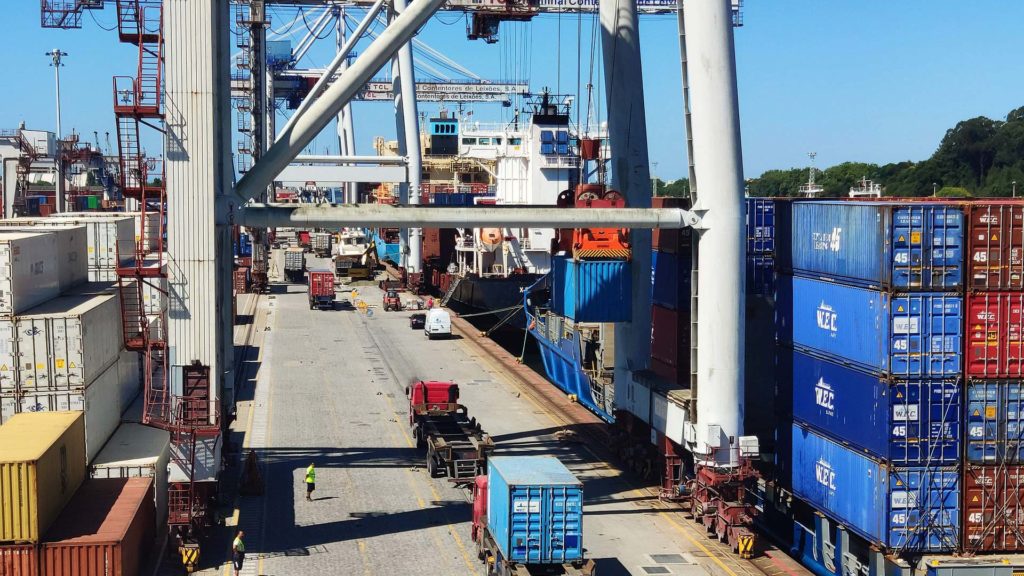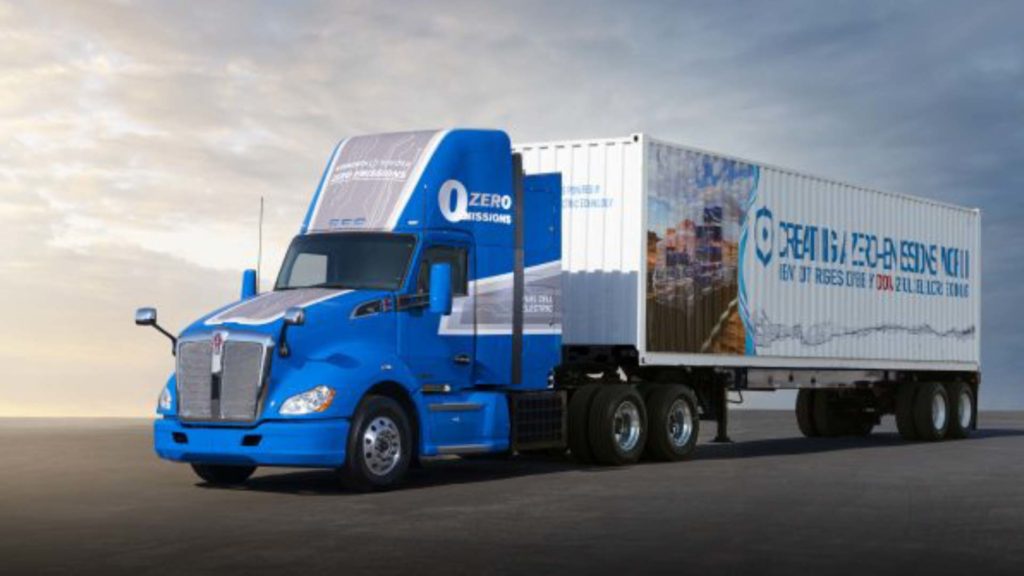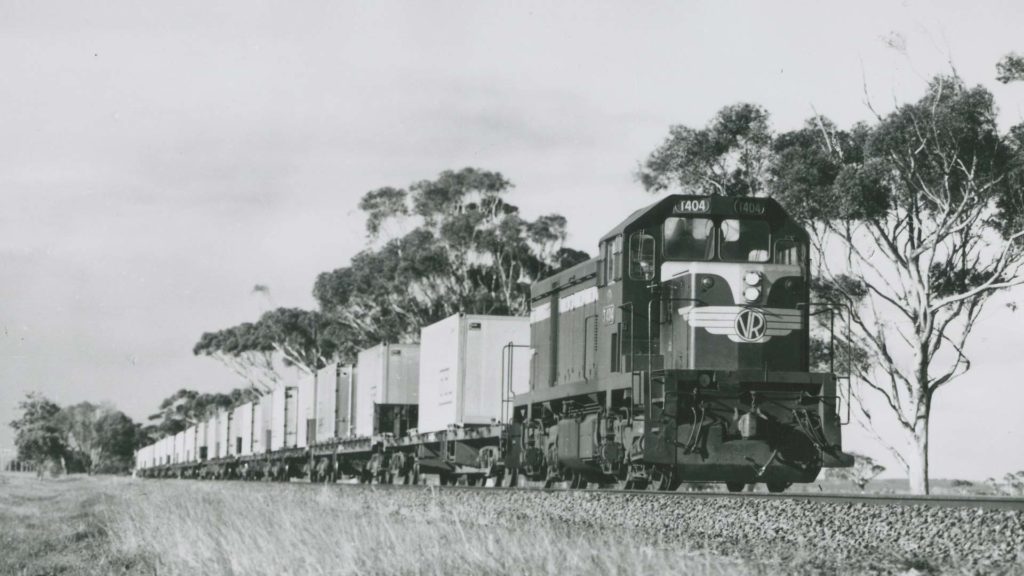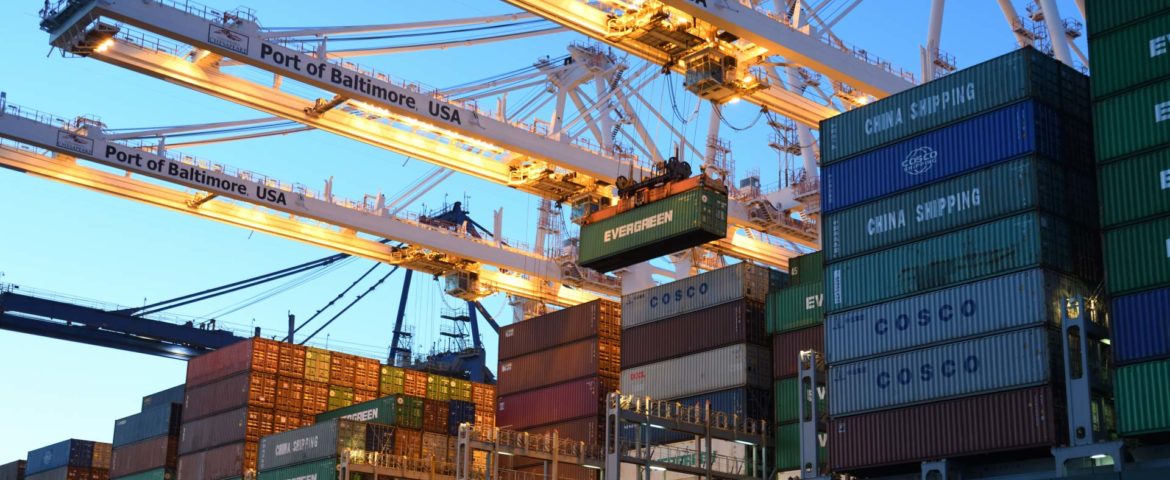What is drayage?
With over 50 million TEU (Twenty-foot equivalent units) of container freight moving annually through US ports, moving these containers to and from the ports, rail terminals, warehouses and shippers is a huge challenge that requires specialized equipment and expertise.
Drayage is just that. It’s how containers move in the US when not on a ship or train. Drayage carriers move containers on the first and last-mile journeys of their route.
Without drayage, container freight would be ineffective, requiring direct rail access or port access and forcing cargo to be unloaded from the container and transloaded into a different type of truck or train car before being moved to its destination. The whole point on containerization in the 1960s-70s was to reduce the amount of cargo handling.
Drayage Chassis
Hundreds of thousands of chassis are owned by group owners, leasing firms or individual companies in some cases and strategically located at terminals, both rail and ocean, where containers will need be to be transloaded.
Container chassis or specially designed versions of the frames under traditional tractor-trailer trucks, but strengthened for the on/off crane movements and with a locking mechanism to safely secure the container for a dray haul that can potentially be hundreds of miles on an interstate.

Some chassis are designed for heavier weights and have 3 axles vs the more common two axles. These 3 axle chassis are mostly used with 20ft containers.
All containers must be inspected before leaving a transload terminal to make sure the tires are safe, the brakes work and the general condition of the chassis is road-worthy. At times, due to the sheer number of containers, it’s possible for dray drivers to have to find another chassis or have repairs made.
Drayage and Shipping Containers
Containers come in several sizes. The majority of international ocean containers which are moved via ship are either 20ft or 40ft long. The 20ft containers are typically used for heavy dense cargo, where the cargo will “weight out” before the additional volume is needed. This is often heavy bulk commodities, metals, or machinery. 40 ft containers are the most common type currently used.
For domestic intermodal shipments 53ft, containers are the most common, which closely match the interior volume of traditional over-the-road tractor-trailers.
In total there are nearly 20 million shipping containers operated globally by shipping companies.
The largest container ships operated today can carry up to 21,000 TEU. There is speculation on even larger ships being built in years to come, however, the width of shipping canals, height and reach of port cranes, and depth of harbors are all limiting factors to building larger ships.

Electric Drayage Trucks
There’s been a lot of talk about electric trucks, just as electric passenger cars like the numerous Tesla models have become popular. For trucks and other heavy machinery, the issue is power density vs power output. Long haul trucks are expected to drive well over 500 miles daily, which puts pressure on batteries to maintain an appropriate balance of weight vs power capacity. The more power capacity a battery pack has, the heavier it is, thus limiting the amount of cargo the truck can carry due to federal regulations.
Drayage is a unique opportunity for electric trucks due to the often limited range that dray trucks must drive. Particularly in the larger port facilities, a substantial portion of all drayage runs is under 150 miles – a great fit for electric trucks!
Expect to see numerous firms pilot electric drayage trucks and in partnership with truck manufacturers use drayage service as a real-world means of testing electric truck designs.
Transloading 40 ft to 53 ft
At times, it can be more efficient for shippers to work with a logistics partner to transload the cargo from 40ft containers into 53 ft domestic containers near the port, since the cargo from 5 40 ft containers can fit into 3 53 ft containers. This means that inland transportation is now 3 loads vs 5. The cost of moving 53 ft containers or vans vs 40ft containers is nonexistent or negligible which presents considerable cost savings.
Additionally many ocean carriers, which typically own 40ft containers, are being more strict about the amount of time they give shippers to return the empty containers due to worldwide container shortages. Shippers moving a lot of volume on a specific route long distances will be more inclined to take advantage of the economies of scale presented by this type of train loading.
Domestic Intermodal Shipping
Often containers are primarily associated with international transportation via ocean carriers, but a significant portion of containers, the 53 ft containers we mentioned above, are used for strictly domestic freight. This type of cross-country container shipping is primarily used on long haul lanes as a cost-savings measure and source of additional carrier capacity vs traditional over the road 53 ft dry van trucking.
Domestic intermodal leverages railroads to move containers for the long haul portion of the trip, then containers are transloaded to drayage trucks for the first and last miles of their journeys.
Railroads also play a large role in moving international containers via partnerships with steamship lines to move their containers further inland. In this role, shippers typically have hired the steamship line to deliver the container to an inland destination which could be a rail terminal or even the final destination. The steamship lines then work out contracts with the railroads to move their containers on certain routes from seaports to inland ports or rail terminals.
Often North American railroads operate separate trains for international intermodal shipping vs domestic intermodal shipping. Some popular shipping lanes even have different terminals for international vs domestic container traffic, with Chicago being a great example of a high volume inland intermodal location featuring numerous intermodal rail transload terminals.
History of Drayage
Drayage was history viewed as “short-haul transportation”, originally via horse-drawn cart. Transporting all manner of cargo from river port, seaports, and other more localized transportation. This type of drayage was almost always moving breakbulk style cargo that was dominant from the 1700- through the 1950s. Drayage was relatively unknown by most until the rise of international cargo containerization in the late 1960s/early 1970s that drayage took on a more pronounced meaning and role in moving containers to and from cargo terminals and railroad transload facilities.

Drayage Capacity and Container Shortage 2020 and 2021
As we’ve written about before, there is a global crunch for drayage and container capacity since the mid part of 2020 and currently has no end in sight.
Traditionally, the capacity of containers and ships is somewhat evening dispersed on shipping lanes, and ships arriving at a balanced consistent interval in ports. Due to supply chain and logistics disruptions during the pandemic, sailings stopped, then restarted which resulted in a massive wave of ships hitting US and European ports at once. This means ships have to wait on others to unload causing major delays, which only compounds the problem further.
Even as carriers have ordered more containers and are operating their ships on ever tighter schedules, there is no easy way to rebalance the system. With unprecendented shipping demand, prices for both international container shipping, port drayage and trucking in general is very high.
You can expect delays, high prices and scarce capacity ton, unfortunately, continue at least until mid-2022, unless a global consumer demand drops.
Want a free lane and cost savings analysis? – Get in Touch!
Zmodal is a top intermodal shipping company providing door-to-door intermodal, and full truckload services nationwide throughout our digital supply chain dashboard which provides easy route searching, booking, document management, and analytics. CONTACT US if you want to lower your supply chain costs or want access to North American intermodal capacity.
Recommended for further reading:
Picture attribution: Thomas Berger, CC BY-SA 3.0 DE <https://creativecommons.org/licenses/by-sa/3.0/de/deed.en>, via Wikimedia Commons




Comment